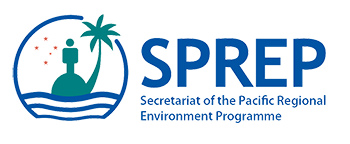2014 PACIFIC REGION
Healthy islands, oceans and people
Secretariat of the Pacific Regional Environment Programmee (SPREP)
Capacity building
Seascape
Project goals and objectives
The landscapes and seascapes of the Pacific region have a unique composition of small terrestrial island ecosystems and large seascapes, and are highly vulnerable to disturbance. The livelihoods and health of the communities of the Small Island Developing States are closely linked to the condition of their ecosystems, but they face challenges of limited resources and capacity.
Based on recommendations arising from the Rapid Biodiversity Assessments (BIORAPs) recently undertaken in Samoa, Nauru and Tonga, this project will develop a suite of tools to increase awareness of the intrinsic values of biodiversity in the Pacific Islands, and to guide activities for the sustainable use of its landscapes and seascapes. The tools will be designed specifically for the Pacific region to raise awareness and promote the concepts, principles and benefits of the Satoyama Initiative, and to assist in addressing key recommendations from the BIORAPs, as well as National Strategies and Action Plans, and the Aichi Biodiversity Targets.
This project will be implemented under the following objectives.
- Develop a suite of Biodiversity tools, including case studies of the unique Pacific Island region, to increase awareness and capacity in the region’s socio-ecological production landscapes and seascapes.
- Develop these tools and associated information in a practical and relevant format for use by decision-makers ranging from Government to local communities.
- Improve awareness of decision-makers to support the implementation of national, regional and international action plans and frameworks, and to address underlying causes of biodiversity decline, as well as associated decline in socio-economic services.
- Build the capacity of resource owners/managers and communities in planning and implementing measures to protect and manage ecosystems in a manner that sustains biodiversity and livelihoods.
- Encourage planning and decision-making that combines traditional and scientific knowledge.
- Raise awareness of IPSI and the Satoyama Initiative at meetings, conferences, and workshops across SPREP member countries.
Description of project activities
This project has four key activities:
- Needs assessment of information and awareness-raising tools
An assessment will be conducted to identify the needs for information and tools for promoting awareness and increasing capacity to live in harmony with nature. This will involve consultation with stakeholders and regional experts. The services of an environmental communications consultant will be engaged to assist in planning a suite of relevant and effective tools. - Developing and designing a suite of Pacific Island biodiversity tools
The text for the suite of biodiversity tools will be drafted and key messages and concepts will be compiled for developing diagrams. A designer will develop the look and feel for the tools, and produce a final set of products to be printed and uploaded online. - Application and dissemination of the suite of biodiversity tools
The suite of biodiversity tools will be integrated into SPREP’s biodiversity projects, capacity-building, and awareness-raising activities. The suite of tools will be utilized, in collaboration with partners and member countries, across a wide range of projects including the Program of Work for Protected Areas under the CBD, the Pacific Islands Protected Areas Portal, the Biodiversity Observatory, the Pacific Environment Information Network, BIORAPS capacity building workshops, etc. - Collection of feedback
SPREP will undertake a survey of stakeholders to gain insight into their awareness of the suite of biodiversity tools and IPSI following completion of the project. Feedback and comments will be collected on the tools, as well as suggestions for additional tools.
Expected outcomes
As a result of this project, a suite of biodiversity tools, including case studies, will be produced to increase awareness and guide activities within Pacific Island SEPLS. These tools are expected to make knowledge and information widely accessible for decision-makers and other stakeholders in a relevant, interesting and action oriented format. It is expected to serve as an essential support tool for catalysing stakeholder and community involvement when partnered with the regional capacity building activities and projects undertaken by SPREP to enhance the ability of Pacific Island member countries to implement national, regional and international action plans and agreements on biodiversity.
Project location
Organisation

Secretariat of the Pacific Regional Environment Programmee (SPREP)
- Sector
- Intergovernmental organisation
- Country
- Samoa
- Website/SNS
- https://www.sprep.org/
Relevant projects
Projects of the same year
Aichi Biodiversity Targets
Aichi Biodiversity Targets
-
Awareness increased
